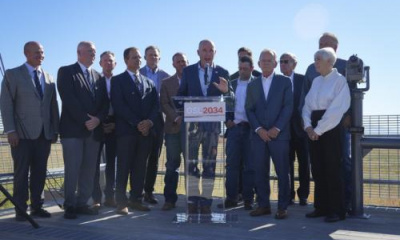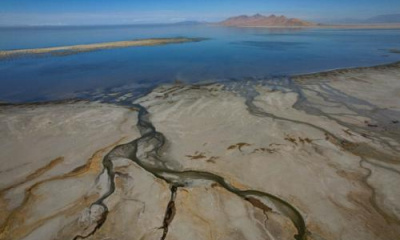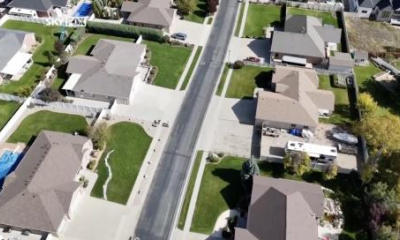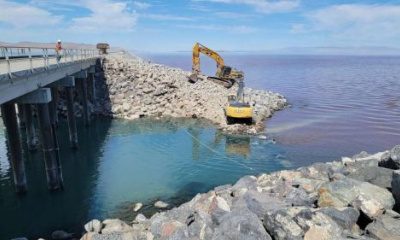GSL briefing details multifaceted effort to help the saline lake
A number of legislative proposals and appropriations dealing with the drought and diversion-stricken Great Salt Lake are winding their way through the process at the state Capitol, giving some leaders room for optimism.
Great Salt Lake Commissioner Brian Steed, in a media briefing Wednesday, said there is new money under consideration to put in for the turf buyback program, for growing “smarter,” and millions on the table to quantify that what water is saved is actually making it to the lake.
There’s even a $20 million funding request for new “investments” in the Great Salt Lake.
“The legislative session has been fast and as predicted, always unpredictable. But we have seen some progress on many of these things and we’ll expect to see legislative buy-in on a fair amount of those things, including making sure the best decisions are based on science, getting more water to the lake and certainly better coordination,” Steed said.
How much water is enough to help the lake?
An analysis from Utah State University and outlined in the appendix of the Great Salt Lake Strategic Plan says on an average snowpack year, the lake would need an additional average of 471,000 acre-feet of water. An acre-foot is enough to cover a football field with one foot of water. In a drought year, that would rise to a million acre-feet of extra water to get it to an elevation of between 4,198 feet and 4,205 feet.
Obviously, Deputy Great Salt Lake Commissioner Tim Davis emphasized, those are rough estimates and only averages.
“We’ll be sharpening our pencils and making sure that those are accurate,” Davis said, and it is still unclear what potential cuts would look like in a drought year.
Both Steed and Davis said this year is turning out to be quite favorable for the Great Salt Lake given the amount of snowpack and reservoir levels.
Soil moisture, too, is in good shape.
Steed said it is important to use a good year like this to help the lake recover.
“We’re trying to get as much water to the lake as possible this year and that’s really going to be key in wet years like this.”
To take advantage of current conditions, Utah Lake is set to release water Thursday to the Jordan River, a tributary of the Great Salt Lake.
The amount of water to be released is yet to be determined, but the Utah Lake Water Users Association estimates that it may be as much as 300 million gallons per day while the gates are open.
Steed and Davis said the large water districts managing upstream reservoirs are also being asked to release water early to make room for the runoff, which is expected to be robust.
Davis said while such alterations will make a difference in the lake’s level — which dropped to its historic low last year — it is even more vital that people’s attitudes change.
“It will take all of us making sure that we’re taking steps no matter where we live within the Great Salt Lake Basin and what we do,” Davis said. “I think (it’s critical) all of us valuing water in our everyday lives and in our professions and ensuring that we’re all taking steps now, not just to conserve water, but also to get it to the lake.”








